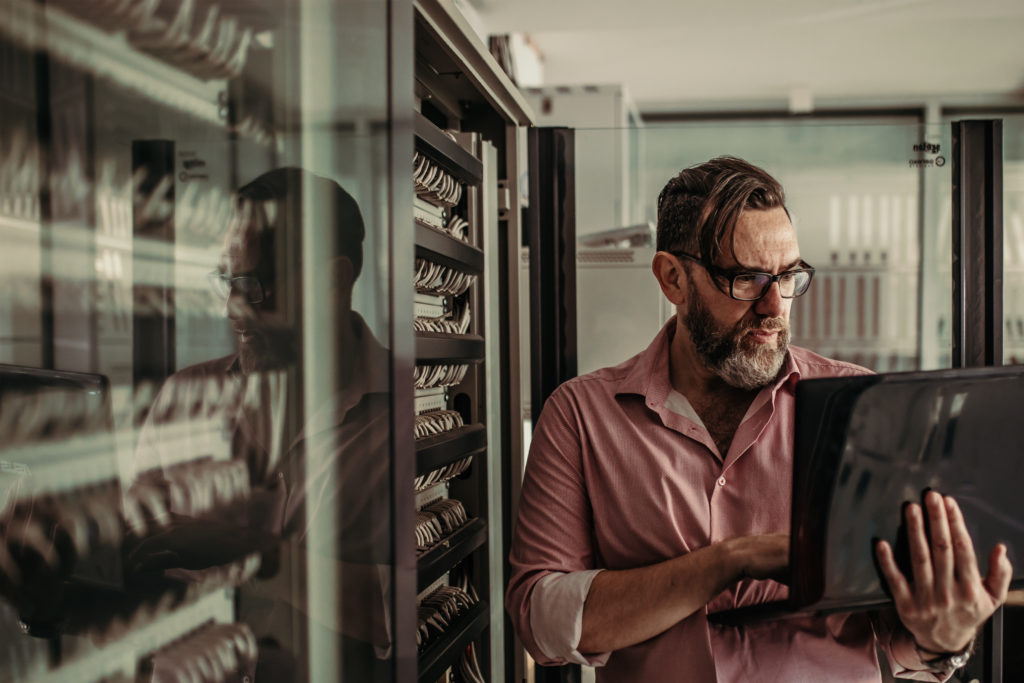The ability to proactively identify anomalous activity and potential attacks before they can do major damage is one of the biggest benefits of tech-driven cybersecurity. In a report published earlier this year, Siemens provided a thorough analysis on why companies are lagging behind when it comes to building strong defenses against cyberattacks, and their clearest and most succinct message was that companies cannot possibly defend against attacks they cannot see.
Raghav Bharadwaj, an analyst at Emerj, believes that technology can offer much needed visibility. Artificial intelligence and machine learning deliver an improved means of identifying anomalous behaviour because at its core, analyzing large amounts of data “inherently involves repetitiveness and tediousness”; a process made easier and more accurate through technology.
Siemens has recognized the importance of early detection and has been on the cutting edge of developing technologies that provide a real-time understanding of irregularities that could signal a possible breach. Through their AI-based Managed Detection and Response (MDR) platform, the company can collect and analyze important data across the energy sector “to proactively detect and prevent cyberattacks targeting critical infrastructure for all operating environments before attackers strike”. The platform mainly serves to benefit small- to medium-sized companies in the energy industry hoping to fortify their defenses against cyber risks with a defense system that is both affordable and scalable.
Although Siemens has highlighted how the energy industry is reinforcing their cyber-risk management practices, more industries are beginning to acknowledge the value of investing in modern cyber solutions to strengthen their supply chains, defend against vulnerabilities, and take full advantage of a digital future. When they do, cyber professionals will be able to proactively detect irregular behaviour and identify potential cyberattacks with more accuracy than traditional tools.
Businesses that don’t have the internal capabilities to build and maintain the necessary AI and ML risk management capabilities are turning to 3rd party platforms to assess their risk exposure. Companies such as RiskRecon, BitSight, and SecurityScorecard are providing a solution for organizations of all industries to understand more about their security posture. They analyze multiple categories of risk and provide an all-inclusive score that represents the health of a business against a diverse set of vulnerabilities. SecurityScorecard, for example, looks at application security, network security, IP reputation, information leak, and endpoint security (among others) to give companies a thorough understanding of their level of risk exposure and specific areas for improvement within their existing framework.
Becoming More Efficient
AI-based cyber solutions can help process millions of data points every minute, making it much faster at detecting anomalous activity and a more cost-effective method of breach identification. When businesses establish proper defenses to guard against sophisticated cyber-attacks, the time and cost efficiencies develop through focused efforts on securing their most pressing vulnerabilities within their security apparatus, rather than spending excessively on securing their entire online work environment.
Capgemini reports that 64% of executives say that using artificial intelligence and machine learning “lowers the cost to detect and respond to breaches,” with companies averaging 12% cost savings compared to their existing systems. But the real benefits of using AI and ML to defend against cyberattacks comes through faster data processing and breach detection.
According to US security company, Synack, cyber professionals can accelerate the time it takes to “evaluate the breach-worthiness of a vulnerability by at least 73% by using AI-enabled technology,” which means that companies will be able to more quickly analyze their risk landscape to determine which areas are most vulnerable.
American Express decided to integrate AI into their cybersecurity and fraud-detection systems starting in 2010 and has since transferred all of its risk management models over to AI. Anjali Dewan, the VP of risk management for American Express, says that “these models are…monitoring 100% of transactions and returning 8 billion credit and fraud risk decisions in real time.” The speed at which AI can deliver these real-time insights has provided incredibly valuable results for their customers, as their digital resolution rate for fraud has improved by 100% since 2014 and their point-of-sale disruption has decreased by 21%.
In the short term, executives are extremely confident that the evolution of AI can drastically improve cybersecurity. This optimism was boosted by a 2019 report by Capgemini, which revealed that 69% of executives believe that AI will be an essential tool for managing cyber threats. While there is little doubt that artificial intelligence and machine learning are significant advances in cybersecurity, Chris O’Brian of VentureBeat describes an “undercurrent of fear about the consequences if things run amok or attackers learn to make better use of the technology.”
Technology has evolved to a point where implementing AI-based cybersecurity is an efficient and effective method to defend against breaches, but as companies evolve their defenses, attackers develop new ways of causing damage. David Burg, cybersecurity leader for EY Americas, believes that the AI space is becoming very dangerous for this reason. Technology is “being used to basically do the inverse of what the defenders [are] trying to do on the offensive side.” Businesses must stay one step ahead to protect themselves against the ever-changing tactics that malicious actors are using against their defenses. It is becoming a high-stakes game of cat and mouse.
Conclusion
The pursuit of complete cyber-safety is neverending. As businesses build higher walls, attackers develop more powerful weapons. Risk professionals must stay ahead of the curve; continually searching for faster and cheaper ways to defend themselves.
Weaving AI into an existing cyber-risk management framework is a necessary step for companies to combat contemporary threats. The evolution of these technologies has significantly improved the ability of businesses to identify and protect against cyber attacks. Whether it be around-the-clock monitoring or the accuracy it provides when processing billions of data points, the integration of technology has offered companies previously unrealized efficiency gains.


